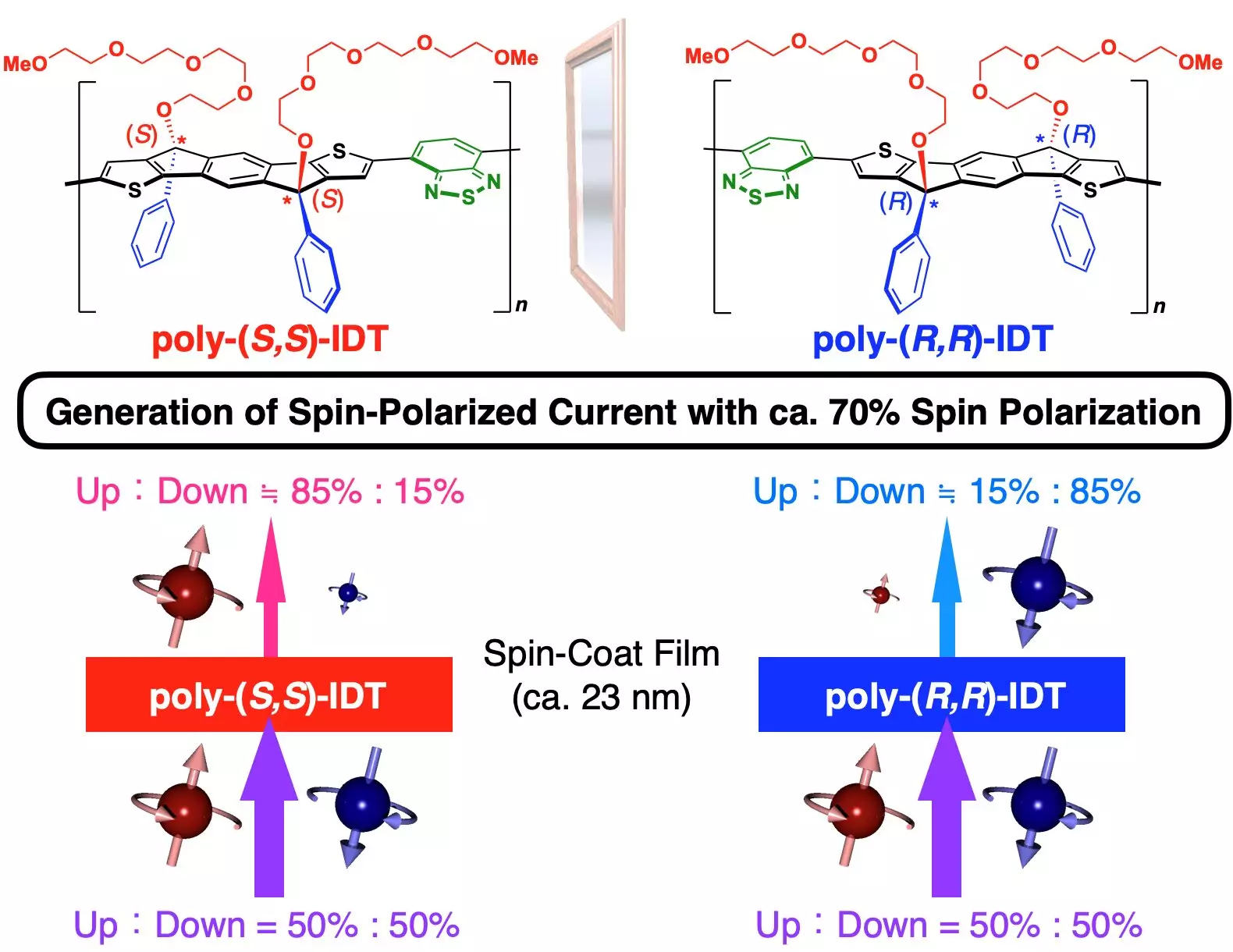Chirality is a fascinating property of molecular structures, akin to the concept of left and right hands, where the same atoms are arranged differently in space. This asymmetry can lead to significant differences in how chiral molecules interact not only with light but also with electrical currents. This unique molecular behavior has sparked interest in various fields, particularly in the burgeoning area of spintronics, which blends conventional electronics with the quantum mechanical property of electron spin.
Recently, a team of researchers from Osaka University made significant strides in the synthesis of chiral copolymers that exhibit exceptional spin polarization. Their work, published in *Chemical Communications*, introduces a novel approach to create thin films composed of chiral copolymers capable of acting as efficient “spin filters.” The crux of this innovation lies in the development of a chiral derivative of indacenodithiophene (IDT), which was integrated as a monomer unit during the polymerization process. This unique approach endows the resulting copolymers with chirality, which is crucial for the desired electronic properties.
The relationship between chirality and spin polarization is encapsulated in the phenomenon known as chirality-induced spin selectivity (CISS). In this context, chiral molecules can enable spin-polarized currents, a characteristic highly sought after in the realm of spintronics, which utilizes electron spin, in addition to charge, to enhance functionality and efficiency of electronic devices. The research conducted by the Osaka team showcases how these chiral copolymer films can be tailored to respond differently when subjected to polarized currents, effectively acting as selective filters for spin-carrying electrons.
The research team employed an atomic force microscope (AFM) to evaluate the CISS of the produced copolymer films. This state-of-the-art instrumentation allowed them to maintain a controlled polarization using a neodymium magnet, leading to a quantitative assessment of spin polarization. Remarkably, the films reached an impressive spin polarization of nearly 70%, positioning them among the top materials for chiral polymers in terms of CISS capabilities.
The implications of this technological advancement cannot be overstated. The simplicity of the spin-coating technique used for film preparation presents a significant advantage over previous methods that necessitated complicated fabrication processes. This ease of production could accelerate the integration of these chiral polymer films into practical applications within the field of spintronics. As researchers continue to explore the potential of spin-polarized currents, IDT copolymers may play a pivotal role in advancing clean energy technologies and next-generation electronic devices that capitalize on both charge and spin.
The groundbreaking research from Osaka University heralds a new era in the development of spin-efficient materials. As the field of spintronics evolves, the adoption of chiral polymers may offer innovative solutions that intertwine molecular chemistry with cutting-edge technology, paving the way for enhanced performance in various electronic applications.


Leave a Reply